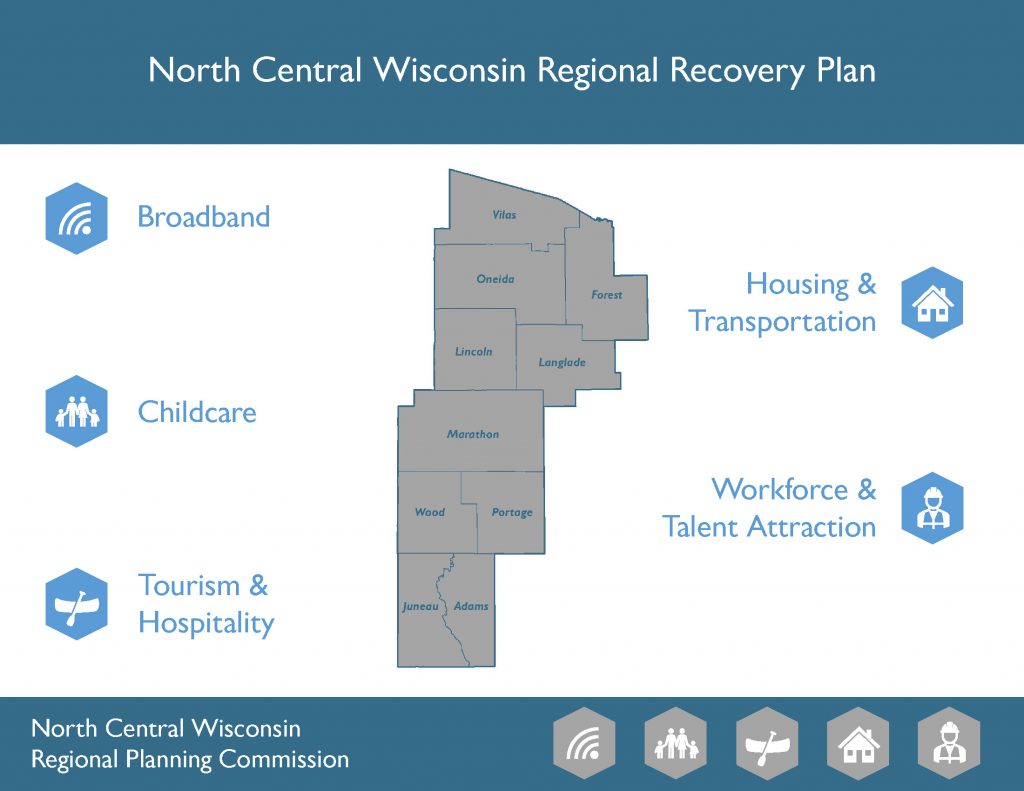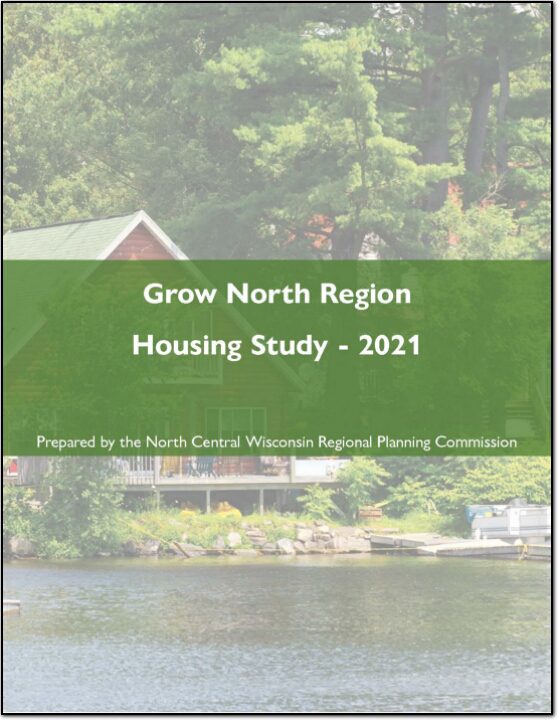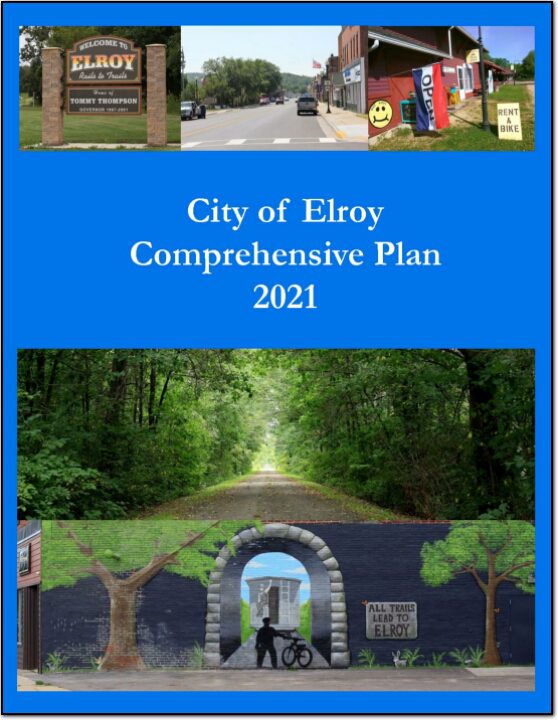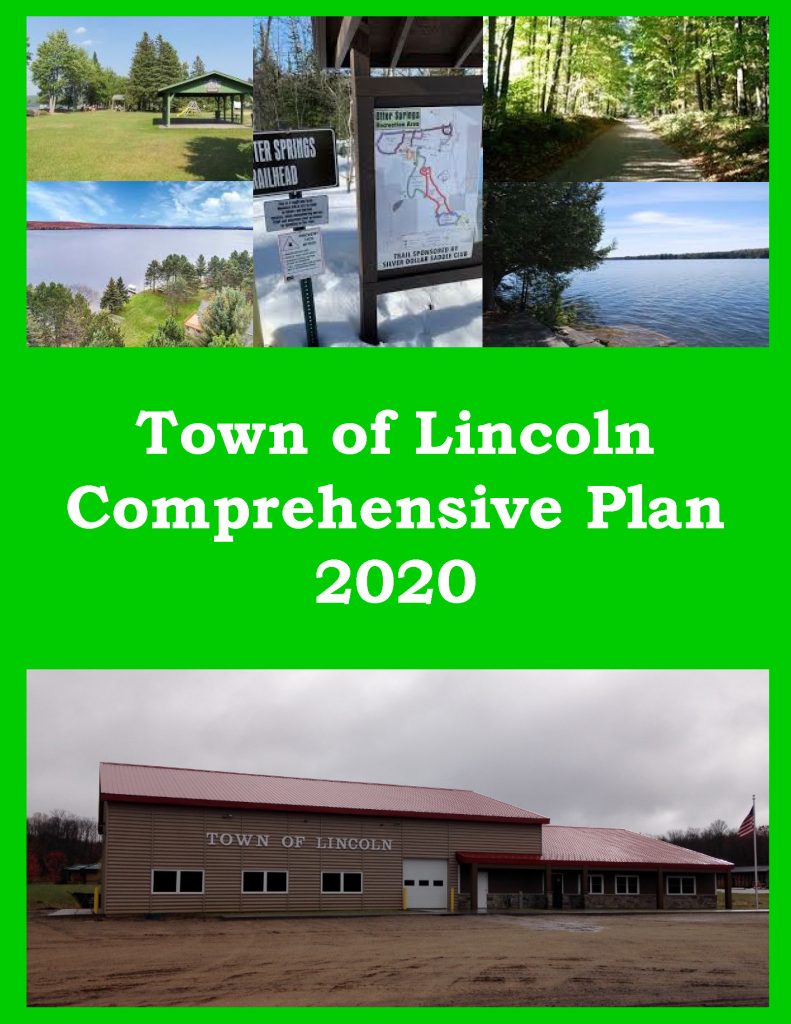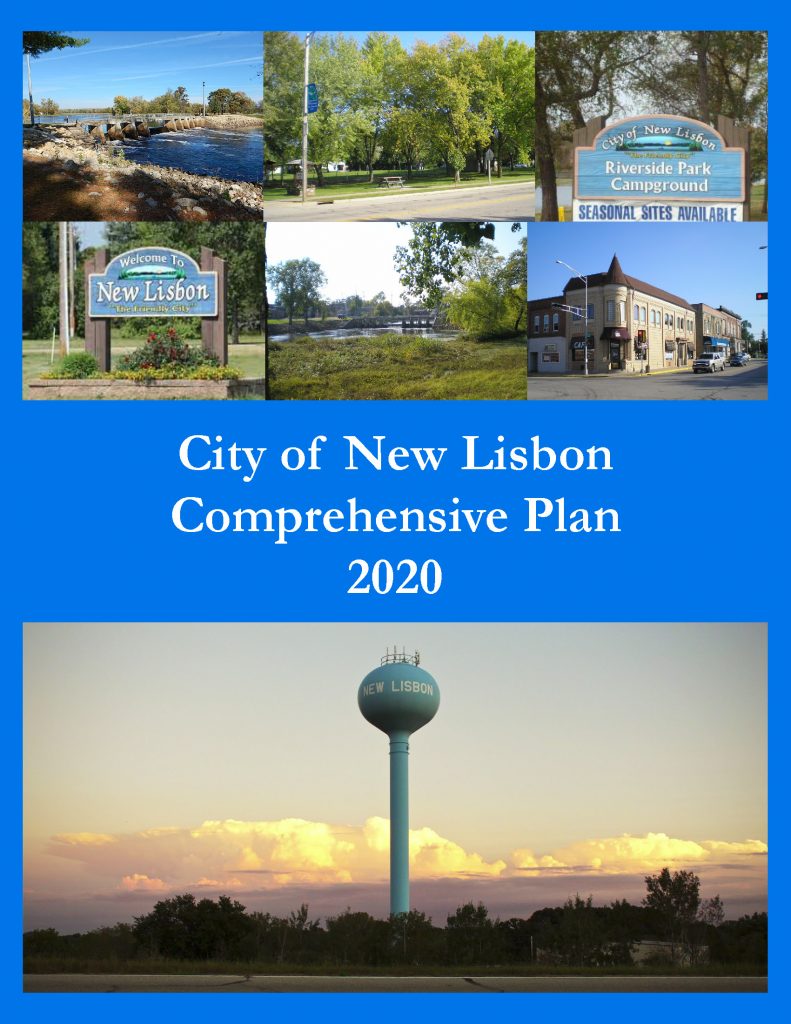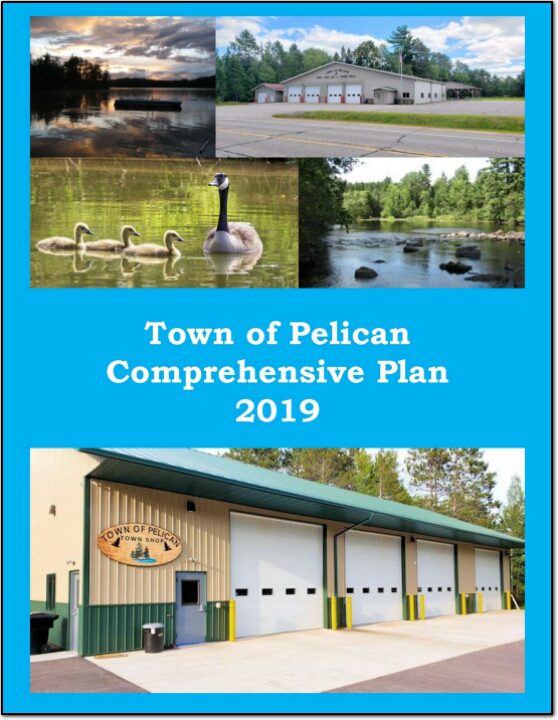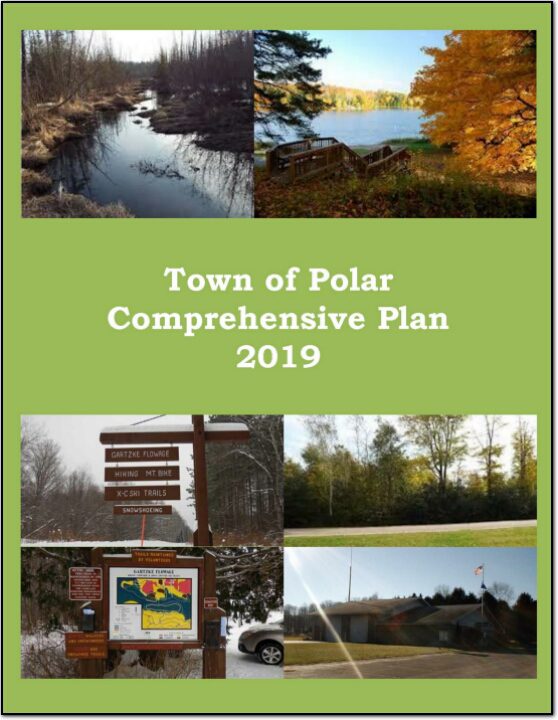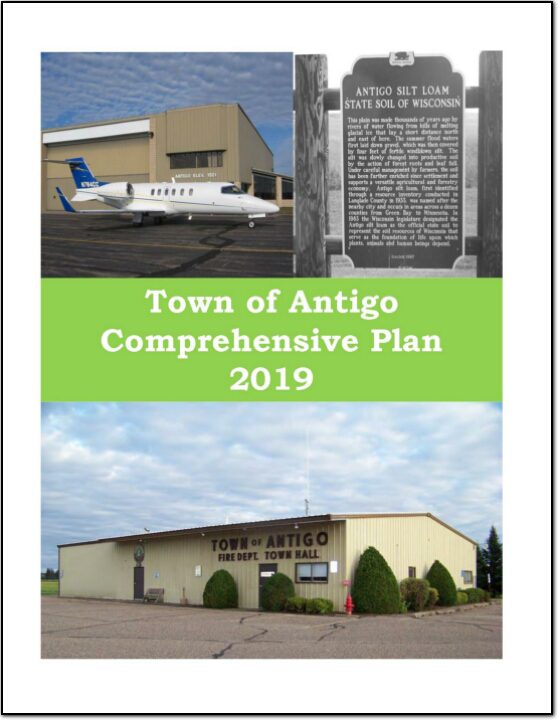The purpose of this plan is to guide economic stabilization, recovery, and resiliency efforts within the North Central Wisconsin Region in the face of the current pandemic as well as future events that cause economic shocks. The goal of this plan is to develop a set of strategies that will help the Region’s local economies recover from and become more resilient to economic shocks by identifying best-practice strategies that help spur economic stabilization and recovery in the wake of economic shocks and that will help build local economic resilience. Helping local recovery and resiliency efforts will help the regional economy as a whole recover and grow back even stronger than before the disaster struck.
As part of the planning process, five foundational pillars were identified as being crucial for the future prosperity of North Central Wisconsin. These five pillars include: Broadband, Childcare, Housing & Transportation, Workforce & Talent Attraction, and Tourism & Hospitality.
The Regional Recovery Plan contains the following chapters:
1 – Introduction
2 – Economic Environment
3 – The Disruption
4 – Analysis of Foundational Pillars
5 – Regional Recovery Strategy
Assessment Reports
As part of the Regional Recovery Plan planning process, five Assessment Reports were prepared covering the five foundational pillars identified by the Advisory Committee as being critical for a strong economic recovery and increasing economic resilience within North Central Wisconsin: Broadband, Childcare, Housing & Transportation, Workforce & Talent Attraction, and Tourism & Hospitality.
Each of the Assessment Reports contains the following six sections:
- Introduction
- Status
- Issues
- Impact of COVID-19
- Benefits of Improving the Status of Each Pillar
- Vision
Access to each Assessment Report is available below:
Housing & Transportation Assessment Report
Workforce & Talent Attraction Assessment Report
Tourism & Hospitality Assessment Report
Regional Recovery Dashboard
As the Region continues to recover from the pandemic and build towards a more prosperous future, local communities and organizations can use the North Central Wisconsin Regional Recovery Dashboard to help track the Region’s progress on issues that were identified in the Regional Recovery Plan as crucial to the prosperity of North Central Wisconsin.
